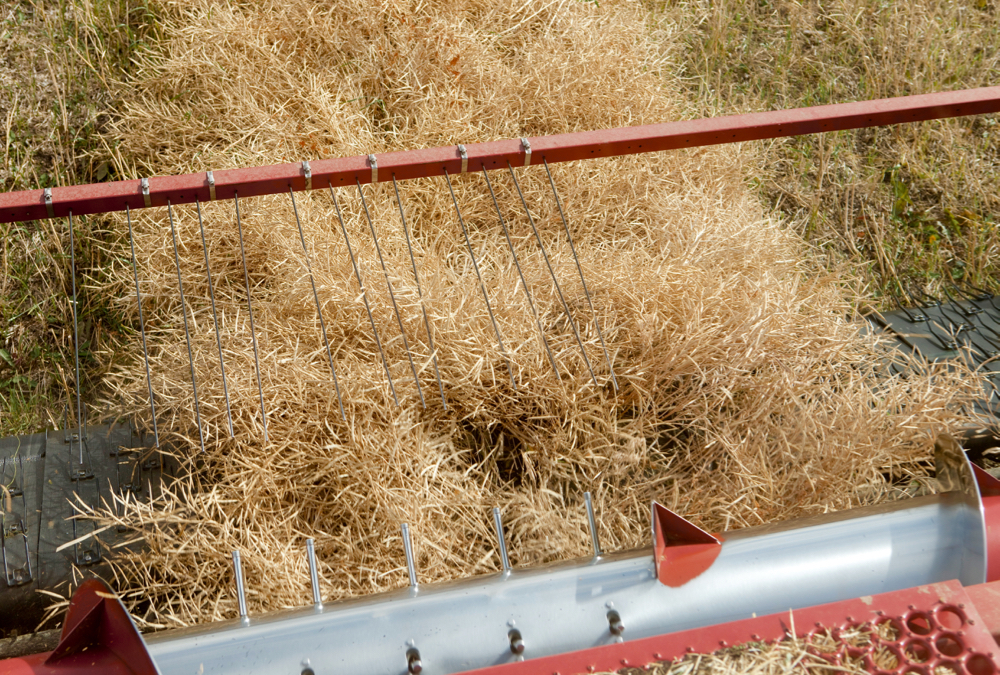Distribution of clubroot spores across Manitoba now suggests it’s time for more widespread testing to keep the disease in check, the provincial ag department recommends.
Since the disease appeared in Manitoba in 2009, fewer than five per cent of the province’s farms have so far been tested for the spores that cause the yield-robbing disease in canola and related plants, Manitoba Agriculture, Food and Rural Development reported in a recent release.
The disease to date been confirmed in 48 Manitoba fields, the province said.
Given the low rate of testing so far, the province said, “it is recommended that all fields be tested to determine if clubroot spores are present, regardless of (a rural municipality’s) classification” for the disease.
Read Also

Alberta harvest wrapping up: report
Harvest operations advanced to 96 per cent complete in Alberta as of Oct. 7, with only a few late-seeded cereal and canola fields remaining, according to the latest provincial crop report.
The province’s clubroot map, shown here, lays out positive clubroot findings from 2009 to 2014 by rural municipality, found through lab tests on soil and/or plants showing confirmed clubroot symptoms.
In infected canola, swollen galls appear on roots, cutting off the supply of water and nutrients to a plant so it prematurely ripens and dies. Typical yield losses run around 50 per cent but can run up to nearly 100 per cent in fields under severe clubroot pressure.
A number of fields in an RM may have been tested and the colours of RMs highlighted on the map denote the highest concentration of clubroot spores found. It doesn’t mean all fields in a specific RM have the same concentration of spores, nor does it mean clubroot has even been detected in all fields.
Concentrations of the Plasmodiophora brassicae spores that cause clubroot can be “highly variable” even within a field, the province said. RM classifications should be used only to indicate clubroot has been found in an RM and to show the “maximum severity” of spore concentration.
RMs coloured red on the map have at least one field with concentrations of at least 80,000 spores per gram of soil — or at least one field where clubroot symptoms have turned up in plants. Fields in those cases should be managed to prevent continued spore buildup or spread.
Generally, MAFRD added, it’s reported that 100,000 spores per gram of soil are needed before clubroot symptoms can be seen under field conditions. That said, lower concentrations of spores could lead to clubroot-symptomatic plants “under favourable conditions.”
(In Alberta, where clubroot made its first appearance in Prairie canola in spots near Edmonton in 2003, clubroot concentrations are known to reach more than 10 million spores per gram of soil in some fields, MAFRD said. Alberta’s current clubroot map is shown below.)
RMs coloured orange on the Manitoba map have fields where 10,001 to 80,000 spores per gram soil have turned up in tests. “Without management, concentrations (in those fields) may increase to levels where symptoms are visible in the field within one crop cycle,” the province said.
In RMs coloured yellow, 1,001 to 10,000 spores per gram soil — levels considered “low to intermediate” — have been detected, but those concentrations can decline over time with proper management, the province said.
In the remaining green RMs, clubroot spores have not been detected or have only been detected at “very low” levels, but fields should still be monitored and retesting is recommended within the next five years to see if concentrations are increasing.
Clubroot is established in Canada mainly in vegetable-growing regions of Quebec, Ontario, Atlantic Canada and British Columbia. Its first appearance in Canadian canola was in Quebec in 1997, but it took until 2003 to reach the canola-rich Prairies.
Outside Alberta and Manitoba, isolated cases have been reported in Saskatchewan (in 2011) and in North Dakota. — AGCanada.com Network
















